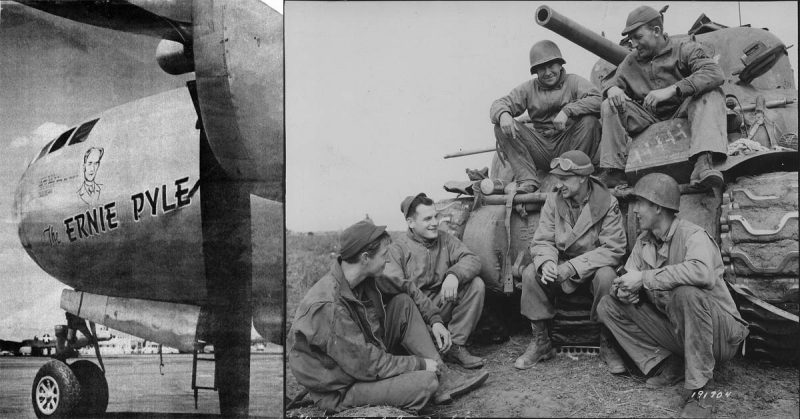Ernie Pyle was a war correspondent from Indiana in World War II. On December 1, 1942, on assignment in Algiers, he wrote: “Life is completely changed for thousands of American boys on this side of the earth. For at last they are in there fighting.”
In December of 1941, the US joined the war in response to the Japanese attack on Pearl Harbor. One year later, Pyle watched the first battle for US forces in Northern Africa. For millions of Americans, his columns were their window into the war.
“You dig ditches for protection from bullets and from the chill north wind off the Mediterranean. There are no more hot water taps. There are no post exchanges where you can buy cigarettes. There are no movies.”
Pyle brought the human aspect of the war home for Americans. His fellow Hoosiers responded. Over 363,000 served in the military during World War II from Indiana. More than 10,000 of them died. Back home, citizens in Indiana turned out to support the war effort. They purchased $3 billion in war bonds, manufacturers in Indiana produced $3.2 billion in goods, including Studebaker military trucks and P-47 Thunderbolt fighter planes.
When the war began, Indiana had two military installations. By the end of the war, they had 31. That number included ten ammunition plants, seven air bases, and five training camps.
Pyle’s journalistic style changed the way journalists covered wars and the way civilians viewed war.
He was born on a farm in 1900. He enlisted during World War I but was still in training when the war ended. He studied journalism at Indiana University but left just before graduating so that he could take a job at a newspaper in La Porte. He soon moved on to the Scripps-Howard newspaper chain. It was there that he wrote his prize-winning articles.
Like many he wrote about, Pyle was killed by enemy gunfire – shot by the Japanese on April 18, 1945, on an island east of Okinawa.
They found a draft of the article he was working on in his coat pocket after he died. It included a description of the dead “scattered over the hillsides and in the ditches along the high rows of hedge throughout the world … Dead men in such monstrous infinity that you come to almost hate them.”
Pyle is memorialised at the Ernie Pyle World War II Museum in Dana. The museum is run by the Friends of Ernie Pyle, a non-profit organisation that saved his birth home from destruction in the mid-70s and took ownership of the site from the state in 2011, The Herald-Tribune reported.
Stephen Key, the executive director and a member of the site’s board of Hoosier State Press Association, noted, “His legacy is not just his writing. He told family members back home what their loved ones were experiencing. When you read his columns, you can almost see and hear and smell what was really going on there.”
The museum is open to the public on Fridays through Sundays from May through Veterans Day. Group tours are available year-round by appointment.
